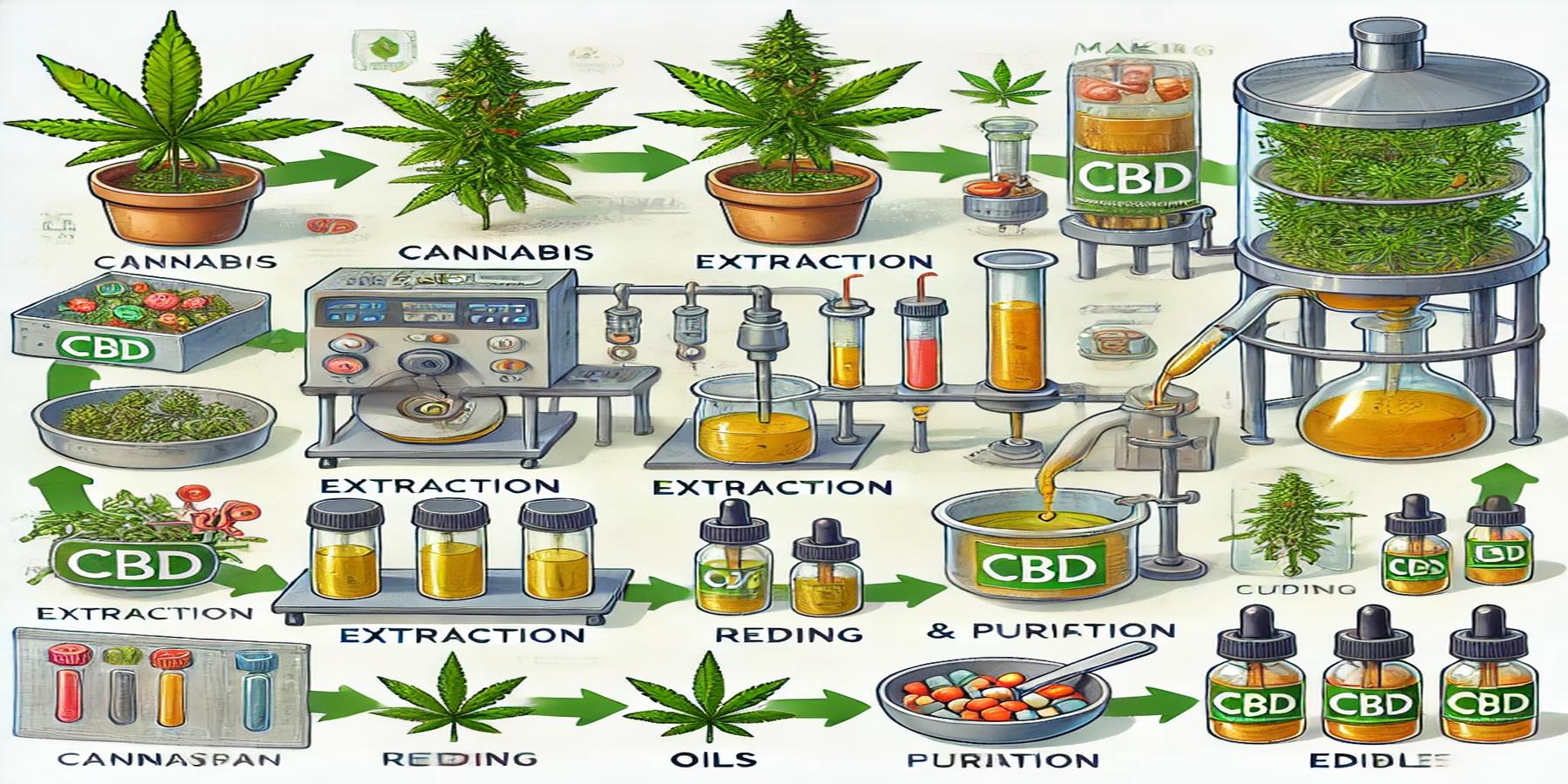Hemp: The Planet-Friendly Power Plant
Curious about hemp’s long history? Check out our section on the [ History of Cannabis ]. This plant has been part of human culture for thousands of years. But today, let’s explore how hemp is making a comeback as a sustainable, versatile resource that could transform modern industries!
Why Extract CBD?
Hemp packs a punch with its popular compound—CBD. Still, to use CBD in CBD oils, CBD gummies, and CBD topicals, we need to extract CBD first. Here’s why:
✅ Removes unwanted plant materials while keeping the good stuff.
✅ Preserves beneficial cannabinoids for a high-quality product.
✅ Heating (aka decarboxylation) activates CBD for effectiveness.
How Do We Extract CBD from Hemp?
There are three main CBD extraction techniques:
1. Ethanol Extraction (The Soak & Chill Method)
- Soak the hemp plant in food-grade ethanol.
- Filter out hemp plant material and chill it to -40°C.
- Evaporate the ethanol, leaving behind pure CBD extract.
- Eco-friendly and retains beneficial cannabinoids!
2. CO₂ Extraction (The Fancy Science Method)
- Uses super-pressurized CO₂ to pull out the CBD oil.
- Separates the useful cannabinoids without toxic chemicals.
- Produces high-potency, full-spectrum CBD.
3. Cold Pressing (The Old-School Method)
- Just press the hemp—like making olive oil!
- No heat or chemicals, but yields less CBD than other techniques.
What Happens After CBD Extraction?
Once extracted, CBD can be used in:
🌿 CBD Oil (drop under your tongue or mix in drinks).
🍬 CBD Gummies & Chewables (a tasty way to enjoy CBD benefits).
🧴 CBD Topicals (creams and balms for pain relief and skincare).
Types of CBD extracts:
- Full-Spectrum CBD: Includes all cannabinoids, including THC, for an “entourage effect.”
- Broad-Spectrum CBD: THC-free CBD extract but still packed with other beneficial compounds.
- CBD Isolate: Pure CBD, no THC, no extras.
Hemp: The Eco-Friendly MVP
Hemp isn’t just for CBD products—it’s a sustainability powerhouse!
🌱 Low Water Use & No Pesticides:
- Needs less water than cotton and thrives without pesticides.
- Cotton farming uses 50% of the world’s pesticides, while hemp grows naturally.
🌍 Soil Health & Carbon Capture:
- Purifies soil through bioremediation, removing toxins.
- Absorbs more CO₂ than trees, making it a major carbon sink.
- Trees provide oxygen, but hemp grows faster and can support reforestation efforts.
🪴 Prevents Soil Erosion:
- Grows in diverse climates and protects topsoil from erosion.
How Can We Use Hemp?
👕 Hemp Clothing & Textiles:
- Produces 2-3 times more fiber per acre than cotton.
- Hemp fabric is stronger, softer, and naturally mildew-resistant.
- Fun fact: Levi’s jeans were originally made from hemp fiber.
📜 Hemp Paper & Wood Option:
- One acre of hemp crops produces as much paper as 2-4 acres of trees.
- Hemp paper lasts longer, resists yellowing, and can be recycled more times than tree-based paper.
- Reducing the need for tree-based products can help combat deforestation and preserve oxygen-producing forests.
🏠 Hempcrete & Sustainable Building Materials:
- Hempcrete (a mix of hemp fiber, limestone, and water) is lightweight, fireproof, and insulating.
- Used for eco-friendly homes, reducing reliance on traditional concrete.
🚗 Biodegradable Plastics & Hemp-Based Car Parts:
- Used in BMW, Mercedes, and Ford for strong, lightweight car panels.
- Hemp plastic offers a sustainable alternative to petroleum-based plastics.
⛽ Hemp Biofuel & Renewable Energy:
- Can be converted into biodiesel and ethanol, providing clean, renewable energy.
- Produces more biomass than corn, making it a potential leader in biofuel production.
🥗 Hemp Food & Nutrition:
- Hemp seeds are a complete protein source with all essential amino acids.
- Can be made into hemp milk, hemp butter, hemp cheese, and even hemp pasta.
- Hemp seed oil is used for cooking, skincare, and even industrial applications.
Challenges & Future of Hemp
Hemp is an eco-friendly powerhouse, but there are still some hurdles:
- THC Regulations: Many countries restrict hemp farming due to confusion with marijuana laws.
- Market & Industry Growth: While hemp can replace many products, consumer demand and infrastructure still need to expand.
- Manufacturing Costs: Some industries haven’t yet invested in hemp-based materials due to higher production costs.
The Future of Hemp
As more industries embrace hemp-based products, we could see major shifts in sustainable fashion, construction, renewable energy, and packaging. Hemp farming has a low environmental impact and high versatility. It also has the potential to reduce deforestation. Hemp farming could be a game-changer for a greener future.
So, whether you’re looking for Eco-friendly clothing, plant-based fuel, or even hemp-built houses, this plant is proving its worth. 🌱🌍
Next time someone asks about hemp, drop some knowledge—it’s not just another crop, it’s a planet-saving powerhouse!


